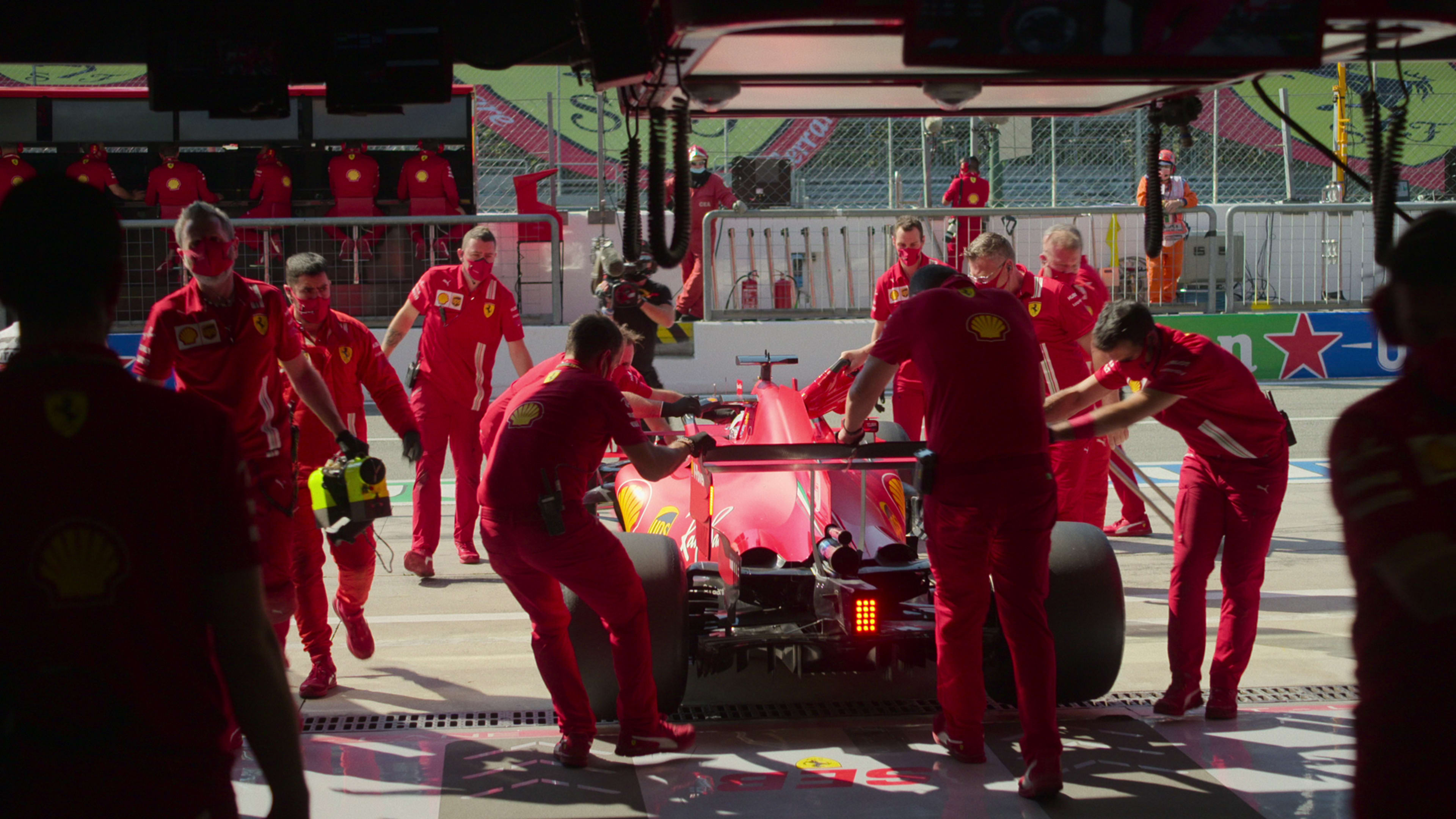When I watched Formula 1: Drive to Survive, the Netflix docuseries offering a glimpse into the world of Formula One racing, I was immediately hooked by the stories of the teams, their drivers, and the triumphs and tragedies on the track. Formula One racing appears to be just another high-octane sport with a rabid fan base, but underneath all the noise and excitement are high-functioning, data-led organizations obsessed with incremental improvements.
As I learned more about Formula One teams, I began to draw parallels in how racing and corporate teams function. Before I became interested in racing, I’d always thought of the driver as the heart of the team. In reality, the driver’s success depends on the grit of his entire team, from the constructors to the pit-crew mechanics. In the same way, a CEO’s success comes from the strength and support of her entire team.
This is why it’s so important for an organization to work cohesively toward a single purpose. For Formula One teams, their goal is clear: to win races and championships. In business, the course isn’t always so obvious, but everyone must know what goals and milestones they must meet to cross the finish line. Once your team has a clear direction, you can steal several practices from the best racing teams to achieve big wins.
CREATE A NO-BLAME CULTURE BY TURNING TO IMPARTIAL DATA
Every single week, Formula One teams make approximately 1,000 changes to improve a race car’s performance. Cars are essentially driving prototypes—they are never in the same configuration, and the team will adjust the car to improve its performance, even during a race. These adjustment decisions are always based on data.
In my experience, using data to drive decision-making removes the layer of emotion that can stymie progress and allows teams to focus on actions that improve outcomes, discarding everything else. In my current role, we use data to create more business opportunities, generate more revenue, predict trends, and optimize operational efficiency. When you rely on data rather than gut feelings, decisions can sometimes feel counterintuitive. To get comfortable acting on those insights, you must have an organization that embraces experimentation.
The best way to encourage experimentation is to cultivate a no-blame culture. Instead of focusing on who’s responsible, a no-blame culture allows your team to glean important insights from each failure. The key is to focus on what happened (or didn’t happen) and how that affected the outcome. For example, when my team had a low turnout for a virtual event, we examined all the contributing factors and focused on improving future performance rather than attacking the individual managing the campaign.
SCHEDULE RECURRING TIME TO WORK ON THE ORGANIZATION
Nowhere is the power of incremental improvements better understood than in Formula One racing. Most races are won by mere seconds, and small choices add up over time. Think about it: If your team improved by 1% every day for a year, they’d end up 37 times better. But to make those incremental improvements, you must schedule recurring time to work on the organization instead of in the organization. Working on the organization means making time for strategic planning, creating new systems, and figuring out how to delegate to other team members.
Focus on creating a system solely based on repeatable actions and tools that don’t necessarily require someone to work them. After that, create an inclusive and evergreen training so you can get new hires up and running quickly without having to train people every time.
When building the sustainable systems for one of my graphic design clients, my operations manager and I set out on this journey. We even implemented a repeatable and scalable onboarding directive so almost everybody in the organization—whether virtual or in person—could get caught up to speed on paperwork, company culture, systems, and the who’s who of the organization by the end of day one.
EMPOWER INDIVIDUALS WITH INFORMATION
As you’re working on the organization, consider how you could improve communication so that your team has access to the right information. After two frustrating races in 2018, driver Lewis Hamilton urged his team to improve communication. His radio wasn’t working properly, which meant he couldn’t hear his team and they couldn’t hear him.
In Formula One, the right information could mean the difference in closing the gap in a race or communicating a critical mechanical failure. In the business world, arming frontline employees with the information they need allows them to make the right decisions without asking for permission, which speeds up processes and fosters organizational agility.
Remember those 1,000 weekly changes to Formula One cars? Imagine if someone needed to submit a 10-page proposal to upper management to get approval for every change. It wouldn’t work. Formula One teams can’t afford to waste time on bureaucracy, and neither can you—no matter the size of your organization. My company is 9,000 employees strong, and I encourage my team to own their roles so I can focus on strategy, not tactics.
Formula One racing may seem an unlikely source for building your leadership handbook, but these teams operate with amazing unity and focus. In business, the finish line can sometimes seem far off and murky. But if you shift your focus to data, better outcomes, and individual empowerment, you’ll soon imagine yourself in the winners’ circle in a spray of Champagne.
Michael Manning is a marketing executive and currently leads the American field marketing branch of Finastra, a financial services company. Michael has years of experience in marketing, leadership, and organizational design, and she hosts the podcast So What Have We Learned?
Recognize your brand’s excellence by applying to this year’s Brands That Matter Awards before the early-rate deadline, May 3.
